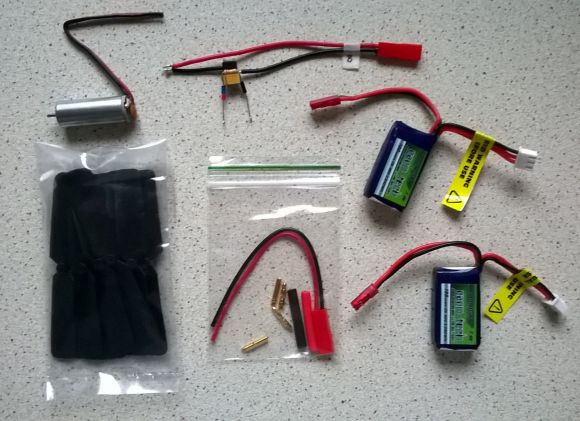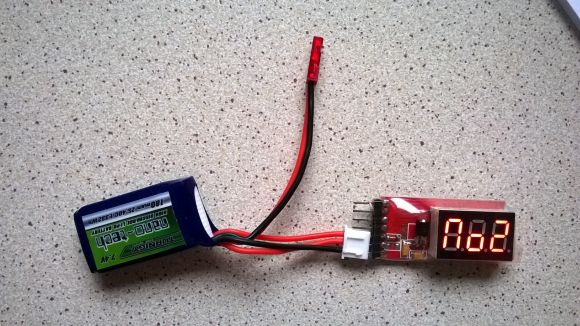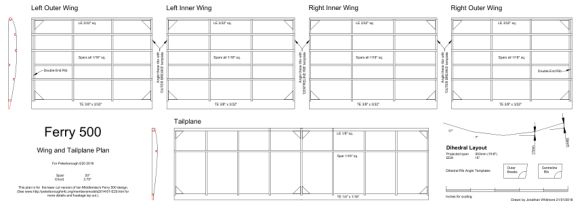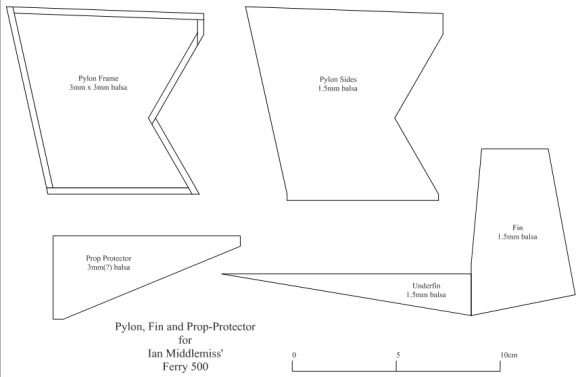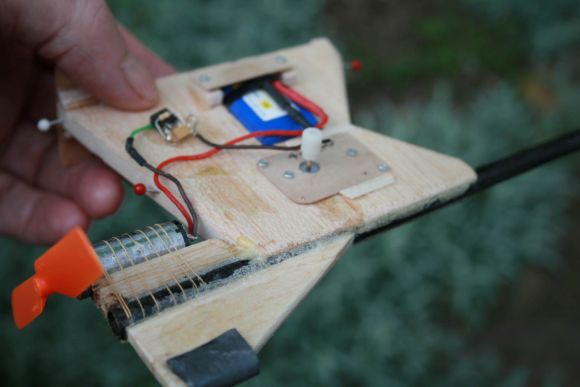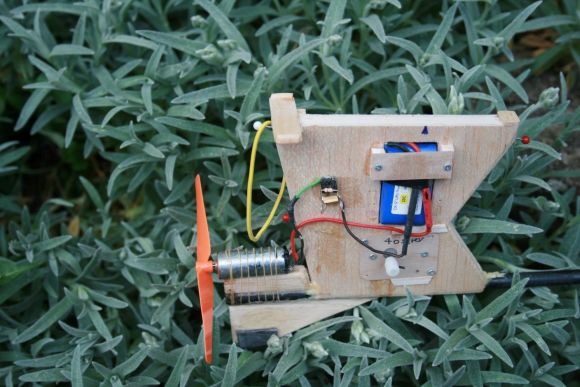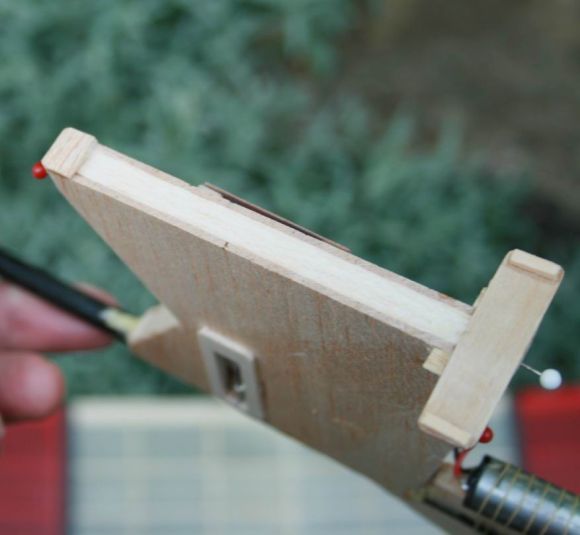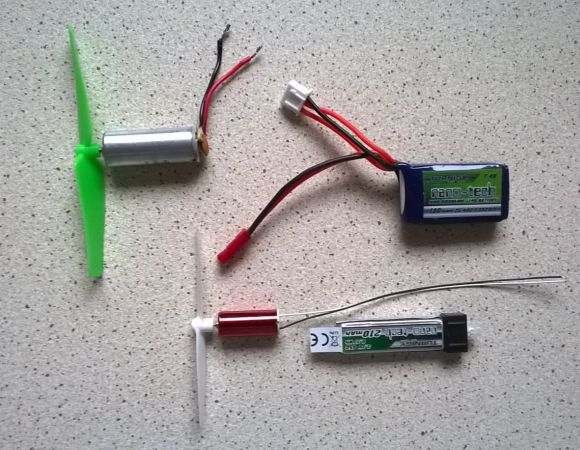 |
 |
||
|
Home Technical
|
An E20 Competition for 2018
Around a dozen members have expressed an interest in flying E20 as one of the classes for the summer competition series at Ferry Meadows. As you might guess, E20 is an electric model with a limited span and length of 20 inches. A number of us flew the class as part of Ian Middlemiss's 'Ferry 500' initiative in 2014 and it's hoped that this new revival of interest may form some kind of tribute the work he put into developing electric free flight for the club. Ian tried various power set ups but settled on a GWS 12mm brushed can motor, a fixed 12 second Peterborough FET timer and a fairly large 2S 240mAh battery that made it possible to fly a whole competition on a single charge. This made for a simple and robust, but rather heavy, set up. In reinvigorating the class for 2018, we had to decide whether to continue with Ian's original format for a level playing field or open up the rules to allow new developments. The GWS motors are no longer being manufactured although Ian's stockpile would be available in the short term. In the last few years the advent of small quadcopters has moved motor development towards better thrust to weight ratios and much tougher designs. In the end we decided to fly two classes: Peterborough E20 sticks with the proven format of a specified motor for a beginner friendly class. Open E20 gives the opportunity to develop new designs and improve the breed. This should point the way to specify a new fixed set up when the time comes. The rules can be seen here: The motor run has been reduced to 8 seconds to better suit flying at Ferry Meadows. Setting up an E20 Motor: GWS CN12-RXC Prop: The original GWS 0320 is now unavailable but there are several copies including the Gemfan 3x2". The chosen props are counter clockwise (CCW) which requires the CN12 motor leads to be reversed. This is how Ian's Ferry 500 was set up so his trim and thrustline settings will apply. The props need reaming slightly to fit the 1.5mm motor shaft. I have done this for all the group buy props but a 1.5mm watchmakers reamer is the ideal tool for the job. Timer: The Peterborough FET Timers are supplied by me. We decided to add a BAT43 diode to prevent damage from reverse polarity from the 9V zapper battery. The 47uF 16V capacitor and 120k ohm resister provide a motor run of around 8.5 seconds including a short ramp down. Please note that due to the diode you can no longer stop the motor by shorting the timer contacts. Zapper: The timer is started by 'zapping' or charging the capacitor with a 9 Volt PP3 battery. The higher the voltage of the zapper, the longer the run, so get a decent one and keep it fresh for competitions. The timers take a fraction longer to 'zap' due to the diode so a good connection is required - too brief a touch may result in a shorter run. The motor run time begins when you disconnect the zapper so nothing is lost by holding the zapper battery to the contacts until you are ready to fly. Battery:
2S 180mAh Lipo. It was decided to reduce the size of the
battery slightly. The 180mAh will easily provide around 10-12 flights but
obviously the thrust drops off as you use capacity. Lipo batteries must not be
discharged below 3.3V but you are unlikely to get that low as power drops off
well beforehand. Turnigy Nanotech's were bought as part of the group buy:
Voltage Checker Charging: Lipos should be charged at 1C in other words: 0.18 Amps or 180 milliamps for a 180mAh battery. Standard '4 button' chargers like the Imax B6 will suffice (cheap copies available on Ebay) and can be set up to charge from the 12V socket in a car at the field. Most of these types have the option to charge at 0.2A which is close enough. Model Plans Ian's original drawings based on P20 flying surfaces can be found here: Bert Whitehead can provide more detailed plans of his original on request: I've drawn up a CAD version for which Mark Benns will be laser cutting rib sets. Ferry 500 Laser Plan_v2
These detail photos of Ian's pylon may be useful: Dethermalisers For practical flying at Ferry the rules dictate that a DT is fitted. Since electric models have power already onboard it makes good sense to use Radio DT. The problem is that the 2S lipo provides 7.4-8.4 volts and most receivers require 5 volts. I have developed a small in line Volt Regulator weighing about half a gram which I can provide for a small cost. Another solution is to use the balance charging lead to take voltage from just one of the cells at 3.7-4.2V. The problem with this is that the cells will discharge slightly unequally and will require a proper balance charge. I have ordered some suitable female balance charge plugs to fit which I can supply at cost. RDT can be achieved for about 3.5 grams using a micro servo such
as the HK5320 Alternatively, the pylon has plenty of room for conventional Tomy timer or the slightly less reliable viscous damper types. Open E20 Ideas - The Future! The short motor run of 8 seconds determines that, to be a success, a model needs to climb well with a good thrust to weight ratio but also glide well. The specified Peterborough E20/Ferry 500 set up has one major disadvantage - it's heavy. The total weight of the motor, battery and prop is about 31 grams and the finished models come out around 60-70g. This means that at 20" span the models glide fast and land heavily. The thrust of the Ferry 500 set up is around 60g so thrust to weight ratio is under 1 and the models climb out at about 45 degrees. Power is about 12 watts. My own efforts in 2014 saw me attempting to build a very light airframe to keep the weight down - but I ended up with a fragile model. With recent developments in small quad copter motors we should be able to do much better. As I see it there are two options:
Increasing the power shouldn't be difficult. With a weight budget of 31g you can get a brushless motor combination that gives you more like 50-80 Watts and 100-150g of thrust on 2 cells! That gives a thrust to weight ratio of 2:1 or more which is clearly a little crazy. Going brushless also means the extra weight, complexity and expense of using an ESC and more expensive timer. However there have also been developments in small brushed racing quad motors. It's now possible to get 8.5mm coreless brushed motors that give 35-40 grams of thrust on a single cell and a direct drive prop (some of the souped up motors claim 45-55g!) These motors weigh around 5g and the 1S 200mAh lipo weighs about 6g. All of a sudden it becomes possible to build a model to about 30g all up but still with an excellent thrust to weight ratio for a hot climb. The challenge then is to build a light airframe but perhaps something along the lines of a Jetex duration model would be suitable. Interestingly the American E20 rules dictate a slightly milder Parkzone 8.5mm motor on a direct drive prop but with a 20 second motor run and a 30g minimum model weight. As far as I'm aware Ian did try one of these motors with a gearbox and larger prop but never tried a direct drive version. The good news is that the motors are cheap and available. I've ordered a Racerstar 8520 Turnigy Nanotech together with a Turnigy-200mah-battery and Gemfan 65mm props which will provide the basis of my lightweight design. 8520 Motor
Jonathan Whitmore |
